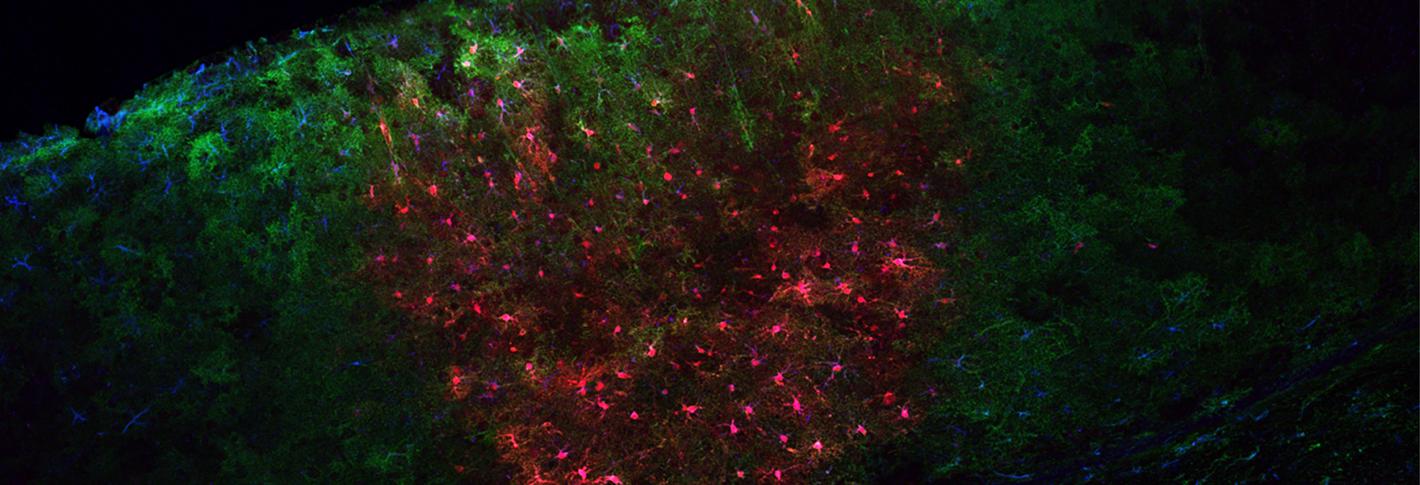
Neurons do not work alone. Instead, they depend heavily on non-neuronal or “glia” cells for many important services including access to nutrition and oxygen, waste clearance, and regulation of the ions such as calcium that help them build up or disperse electric charge. The lab of Mriganka Sur, Newton Professor of Neuroscience, has made key discoveries during the Picower Institute’s 20 years about how glial cells called astrocytes contribute to doing the computational work of the brain.
In a highly influential study in 2008, the lab discovered that in the visual cortex astrocytes, like neurons, respond to visual stimuli, with distinct spatial receptive fields (areas they track in the field of view) and sharp tuning to image features including object orientation. Astrocytes, in other words, were working in lock step with their neighboring neurons. Furthermore, blocking calcium signals in astrocytes, without affecting neurons, nonetheless reduced local flow of oxygenated blood to the cortex, strongly implicating astrocytes in regulating ‘hemodynamic’ or blood oxygenation signals that lie at the core of brain imaging methods such as functional magnetic resonance imaging (fMRI).
Above: In a mouse's primary visual cortex, astrocytes labeled blue also show green staining for calcium and red staining for ChromeQ a new tool for manipulating astrocyte glutamate uptake.
Not only do astrocytes help neurons make their computations, they also help neurons adjust to new experience, a property called “plasticity.” In a 2012 study the lab revealed, for instance, that if they stimulated a brain region called the nucleus basalis, which produces the neuromodulating chemical acetylecholine, at the same time as exposing mice to visual stimulation, they could strengthen synapses in the visual cortex, a manifestation of plasticity. Importantly, they also showed that for the plasticity to happen, astrocytes had to be activated by the acetylcholine, revealing a key role for the cells in neuronal plasticity.
Then in 2014 the lab worked with Ed Boyden, Y. Eva Tan Professor in Neurotechnology and an affiliate member of The Picower Institute, to provide another influential demonstration of the pivotal role of astrocytes when they showed in live, behaving animals that they could enhance the response of visual cortex neurons to visual stimulation by directly controlling the activity of astrocytes. The team gained that control using a technology that Boyden co-invented called optogenetics that genetically engineers cells to be controlled with flashes of light.
More recently, in 2021, the lab showed that manipulating astrocyte uptake of the neurotransmitter glutamate in young mice altered ocular dominance plasticity in visual cortex, providing another example of the close relationship between astrocytes and neurons in building synaptic connections and functional circuits.

